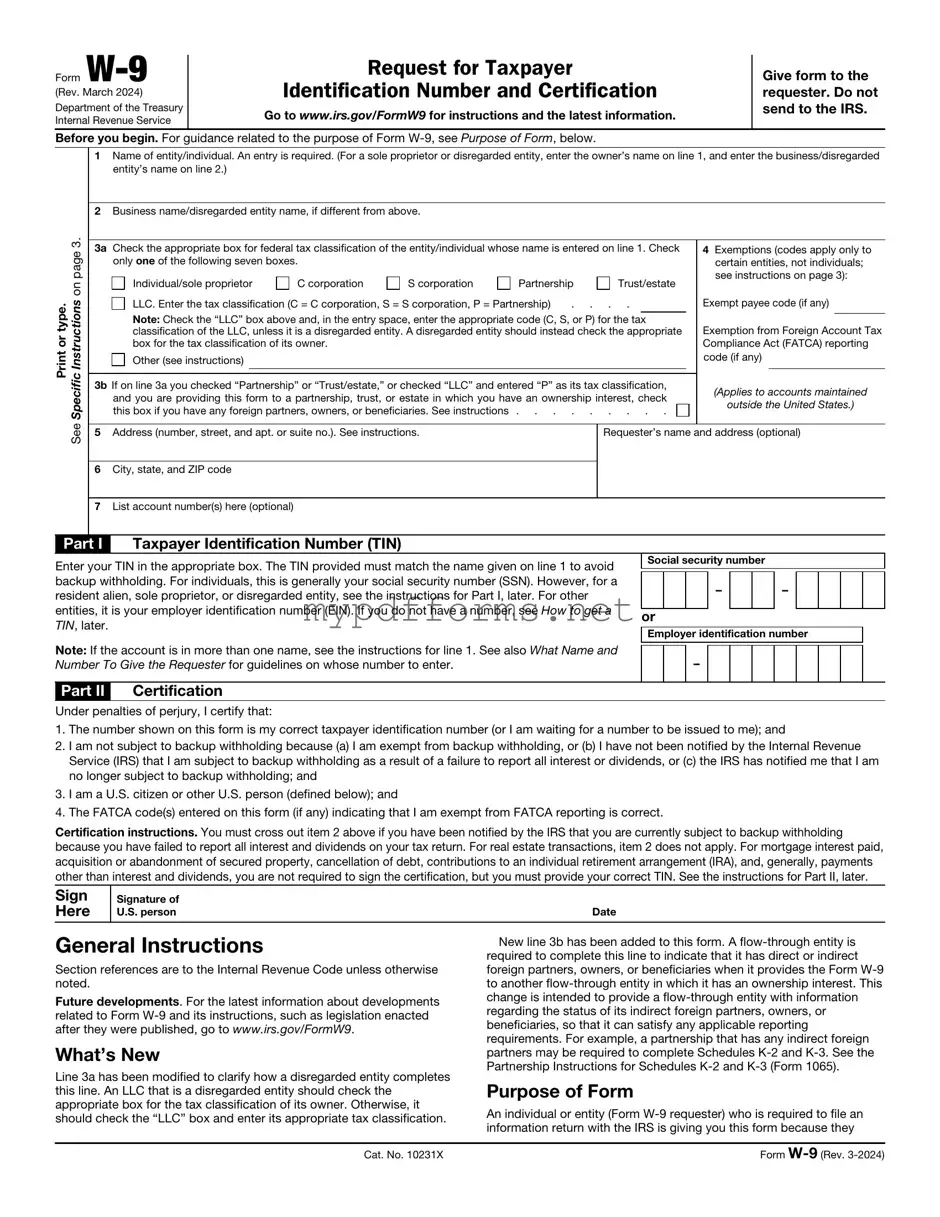The IRS W-4 form is similar to the W-9 in that both are used for tax purposes, but they serve different functions. The W-4 form is primarily used by employees to inform their employers about their tax withholding preferences. It allows individuals to indicate the number of allowances they wish to claim, which directly affects the amount of federal income tax withheld from their paychecks. While the W-9 collects information for independent contractors and vendors, the W-4 is focused on the employee-employer relationship and ensures proper tax withholding throughout the year.
For those looking to establish a limited liability company (LLC), filling out an effective Operating Agreement template for your LLC can facilitate smooth management and operational procedures among members.
The 1099 form is another document closely related to the W-9. While the W-9 collects taxpayer information, the 1099 form reports income earned by independent contractors and other non-employees. Businesses use the information from the W-9 to accurately fill out the 1099 form at the end of the tax year. This connection highlights the importance of the W-9 in ensuring that the income reported on the 1099 is correct, facilitating accurate tax reporting for both the payer and the payee.
The IRS Form 4506-T is also comparable to the W-9, as both forms involve taxpayer information but serve different purposes. The 4506-T allows individuals to request a transcript of their tax return from the IRS. This document can be essential for verifying income or tax status, especially when applying for loans or financial aid. While the W-9 provides information for tax reporting, the 4506-T is used to obtain historical tax data, demonstrating a different aspect of taxpayer documentation.
The SS-4 form is similar in that it also collects essential taxpayer information, but it is specifically used to apply for an Employer Identification Number (EIN). Businesses or entities use the SS-4 to obtain an EIN, which is necessary for tax reporting and identification purposes. While the W-9 is focused on individual taxpayer identification for income reporting, the SS-4 is about establishing a business identity within the tax system, illustrating the different roles these forms play in tax compliance.
The IRS Form 1040 is another related document, as it is the primary tax return form for individuals. While the W-9 is used to provide information about a taxpayer's identification, the 1040 form is where individuals report their income and calculate their tax liability. The W-9 may supply information that contributes to the data on a 1040, especially for self-employed individuals or those receiving income from various sources. This relationship emphasizes the broader context of tax reporting and compliance in the United States.
